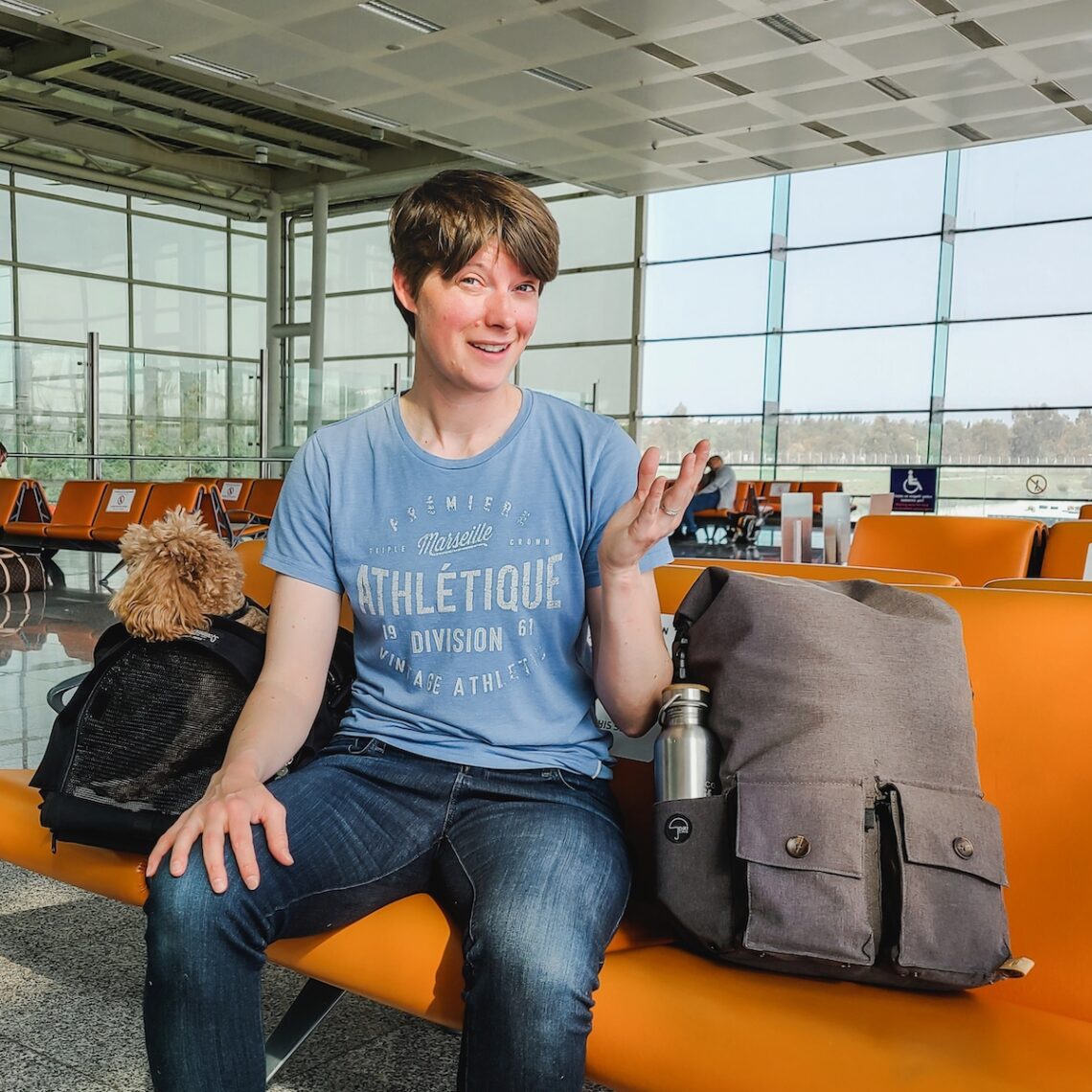
How Much it Really Costs to Travel Full Time
We haven’t been totally honest about how much travel costs. Every month we share our cost of living from whatever beautiful destination we happen to be in, truly iconic cities like Istanbul, Turkey; Split on the coast of Croatia; Seville in Spain or Florence, Italy. In those videos, we give you all the fun costs related to travel, like accommodations, entertainment and dining out. But every month there are a slew of costs that we never, ever talk about.
So we’re finally sharing how much full time travel really costs. If you’re really serious about packing your bags and travelling full time, these are the other costs you need to know about, otherwise your budget isn’t going to take you very far.
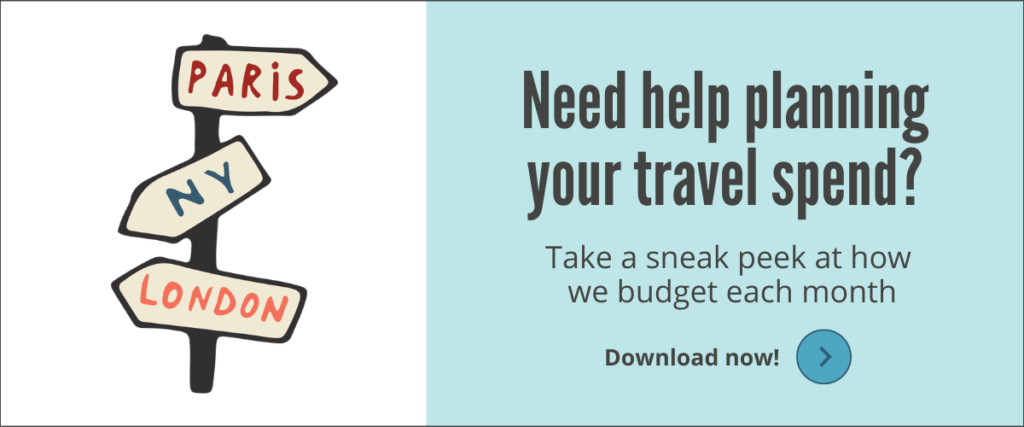
When we started travelling full time we knew right away we weren’t going to be doing it backpacker style. We wouldn’t be sleeping in hostels or taking overnight buses to save a buck. Even though we’re budget minded, we’re not budget travellers.
At the same time, we were quitting our jobs to take on this lifestyle; we were basically walking away from our careers. That’s a really serious move from a financial perspective so it was really important to make our budget work. And, of course, the bills started adding up before we even got on a plane.
The first thing we needed to do was figure out what to do with all our stuff. We had accumulated a lifetime worth of things. It was all the usual stuff: furniture, kitchenware, clothes, mementos — and it all had to go somewhere.
We sold or donated as much as we could but we still had a storage locker worth of stuff back in Toronto. And those lockers don’t come cheap…we were spending $115 USD a month — that’s $1,380 USD a year.
The next thing we needed to tackle was data for our phones. If we were on the road full time in multiple countries, how would we stay connected? We managed to find a provider called Flexiroam that covers us everywhere we go and the cost has averaged just $8 USD a month total for the two of us. This actually turned out to be the cheapest line item of our entire travel budget.
However, the big item we needed to figure out before we even stepped foot on a plane: health insurance.
Of course, we looked at all the major insurance providers out there; we really took our time and read all the fine print. Basically we were looking for an insurance provider that would cover us if we suddenly needed to be hospitalised wherever we happened to be. We started our journey with Safety Wing, then a year later we reassessed our needs and switched to Cigna, and now we’re back with Safety Wing.
On average our premiums have been $130 USD a month for the two of us, which is $1,560 a year. The Americans in our audience are always shocked by how low this number is. However, since we don’t plan to travel in the US, our premiums are reduced by half or even more.
Of course, our insurance plan only covers emergency situations, not preventative care. Right away, as soon as we started travelling, we ran into a lot more expenses. We’re both very healthy people but we still need to get our regular check ups like everyone else.
There we were in the second destination of our big adventure: Lviv, Ukraine. We were busy enjoying the beautiful monuments and great food when my phone gave me a little reminder; it was time to see the dentist.
I used Google Maps to find an English-speaking dentist with great reviews. And that’s actually how we find all our medical professionals. I got a standard cleaning and the overall experience was great. Since then we’ve had full physicals in Croatia for $219 USD each; Gillian went to the chiropractor in Serbia for only $25 USD; and we’ve both had lots more dentist appointments as we travelled. The average cost for all those dental appointments — some of which had x-rays — was $47 USD per visit. You can compare that to the last time that I had a full check up in Canada which was $200.
Our total spend on preventative treatments over two and half years was $995 USD, which is fairly reasonable. However, don’t forget about all the COVID tests we’ve had to do over the past couple years. We added them up and were surprised to discover that we spent practically another $900 USD getting little swizzle sticks up our noses. Hopefully there will be fewer of those going forward.
We were still in Lviv, getting ready to fly to Turkey and we realised that we had to deal with one nagging little issue: our crappy luggage.
To backtrack, when we were getting ready to start our adventure we were in a really frugal mindset and we thought, let’s save some money and buy used luggage. We bought the biggest, cheapest used suitcases that we could find. We took one flight — just one flight — and already one of them started breaking. So we picked up the cheapest replacement we could find in the market in Lviv, with predictable results.
Two broken suitcases later, we finally bought brand new, brand name suitcases of a reasonable size. Of course, the good stuff costs money. Plus we’ve purchased a new backpack for me and new cross-body sling bags for each of us. We’ve spent a total of $650 USD — just to carry our stuff around. And that doesn’t even include replacing any other worn-out gear or clothing we’ve needed along the way.
Yet none of these costs come close to one of the biggest expenses of travel.
After accommodations, flights are the largest expense in any travel plan. Of course, the total amount that we’ve spent to date on flights would be different from what you would spend or someone else spends. There are so many factors at play. Are you taking premium airlines or flying budget? Are you checking bags? Are you using points? Are you choosing seats or just taking whatever seat is assigned. All of this can quickly add up.
To illustrate the point and give you a sense of the level of spend to expect, we’re two people travelling full time for over two years and we’ve been to 11 countries — some of them multiple times. In total, all of our flights added up to $10,300 USD.
You might be wondering whether we do any travel hacking. We do use points to offset our costs but we don’t open multiple credit cards at a time trying to cash in on welcome deals. Canada doesn’t have as many credit card options to begin with and it’s just not where we want to put our energy.
Of course, this hasn’t been an easy time to travel with the pandemic going on. Those of you who’ve been following our videos know that we’ve made plans — we’re booking flights, accommodations — and then there’s another wave and suddenly we can’t go to that country. Over the last couple years, we’ve had to cancel way more plans than we ever expected. Some of them were reimbursed but definitely not all.
Which brings us to a very important category: our emergency fund. We’ve set aside a fund that’s basically equivalent to three months of living expenses just to cover emergencies; this is any unexpected expense that doesn’t belong in any other budget category. And, over the past couple years, all our unexpected expenses related to cancelled plans.
So far this year we’ve racked up $289 USD for cancellation-related charges, which is not that bad considering the number of cancelled plans. However, what that doesn’t include are all the airline credits that we’ve accumulated that we may or may not be able to use before they expire.But at least we know we have our emergency fund and if we run into any issues while we’re travelling, we can handle it financially. We’re not going to run short of money.
That leads us to the greatest lesson we can impart: If you’re spending a lot on your travel plans, make sure it’s refundable. And if it’s not refundable, make sure it’s an amount that you’re really comfortable walking away from.
Despite all the ups and downs of the past couple years, we did it. We’ve lived in 11 countries since we started travelling. We’ve seen some of the world’s most iconic sights: the Trevi fountain in Rome, the Acropolis in Athens, the walls of Dubrovnik in Croatia. Just last month we were standing right in front of the Library of Ephesus in Turkey.
Throughout this whole time we managed to keep our costs at a very reasonable level. Certainly the lifestyle we have now costs us a lot less than back when we were working full time. Based on our spending during the past couple years, we know that we can definitely keep travelling as long as we like. In fact, if you want to really get into the details of what our lifestyle costs, you can check out our cost of living in some of the world’s top destinations.


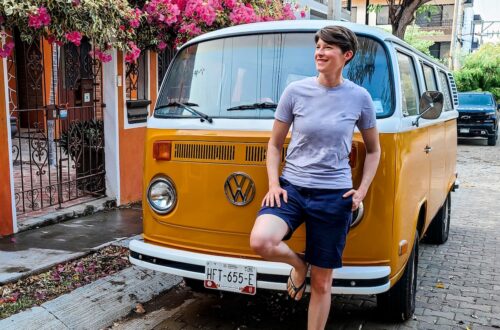
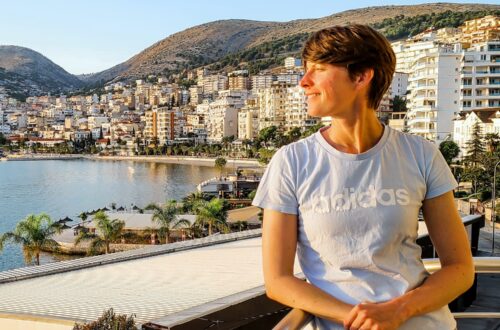
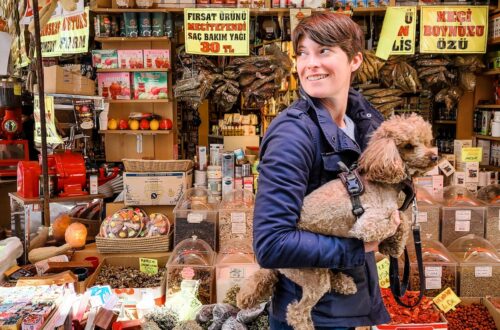
4 Comments
Micha
I am inspired by your life style, thank you for sharing.
Our Freedom Years
So happy to hear it – thank you! Keeps us motivated!
Pam Welty
So…. we are planning on doing the same thing…. but…. did you do a total of expenses for 1 year? Is it $25,000-45,000 in whatever currency you want? I’m looking for approximate numbers….
Our alternate is to just go for it for a year… see what it costs… subtract that from what we have saved and let that determine our years of travel… seems extreme but maybe I should give up on too much study and just get going…
Thanks,
Pam and Marc
Our Freedom Years
We also did a lot of upfront calculations but, in the end, the most helpful thing was testing our budget out on the road. We don’t share our total spend since there are additional personal costs over the year, such as pet care, gifts, donations, personal care products, clothing – the list goes on! Instead we provide what we spend on the most common budget items and hope that it provides everyone with a good starting place for their numbers. Good luck with your planning! We also have a budgeting workbook that might be helpful https://bit.ly/3ooPrWy